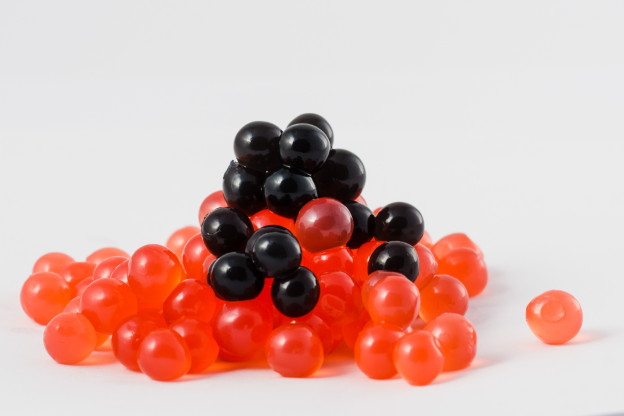
What are popping bobas
Popping Bobas – What Is It?
Popping bobas are the latest craze. But what are they?
Popping bobas are similar to tapioca pearls, also referred to as bubbles or boba, but with fruit juice that pops inside your mouth. Popping pearls are considered to be revolutionary technology in the production of pearls toppings. The innovative product is becoming the top attraction in shops that sell frozen yogurt, bubble tea, shaved ice, ice cream, and other cold drinks.
Trending Beverage Sensation
Popping bobas which originated in Asia, the place that gave birth to the famous tapioca pearls, is now trending in beverage shops in the United States and Europe. Popping bobas, or popping pearls, are creative and healthy toppings featured by famous chains such as Pinkberry, Yogurtland, and Red Mango. They also find their way into a variety of desserts and beverages, giving them a fresh, new look. A lot of people also buy popping pearls for use in their own homes.
Popping bobas have become very popular because of the fruit taste in the bobas and the exciting feeling created when they pop inside the mouth. The popping bobas literally burst with fruit sensation coming from the different flavors available.
Popping Bobas
Popping bobas are similar to the tapioca bobas in the bubble or boba tea. Popping bobas, which are slippery, little fruit flavored balls, have thin skin and are filled with fruit juice that pops in your mouth when they are bitten or squeezed. They are made from seaweed extract with fruit juice flavorings such as mango, lychee, strawberry, passion fruit, orange, green apple, cantaloupe, kiwi, pomegranate, cherry, and other seasonal fruits.
The main ingredients of the popping bobas include water, fruit juice, sugar, calcium lactate, malic acid, artificial coloring, fruit flavorings, and seaweed extracts which form the outer wall or skin.
Popping bobas are prepared using the trendy way of cooking called Molecular Gastronomy, an area of food science that investigates the chemical and physical transformation of ingredients in cooking. The flavored juices that contain no calcium are mixed with a small amount of sodium alginate which will then be dropped into a container filled with cold calcium chloride solution. Each drop of the alginated liquid forms into a small ball in the calcium solution, causing the formation of a thin, flexible skin. The resulting popping bobas are removed from the calcium bath and rinsed with water to remove any after taste.
Tapioca Pearls vs. Popping Bobas
Tapioca pearls and popping pearls are both popular toppings and addition to beverages and desserts but they differ a lot from each other. Tapioca pearls are chewy while popping pearls quickly pops in the mouth. The tapioca pearls provide a sweet aftertaste as you chew them while the quickly bursting popping pearls instantly add a layer of flavor to the beverage or dessert.
The tapioca pearls, sweetened with honey or sugar, provides roundness to beverages made of tea. Because of their neutral flavors, tapioca pearls can pair with any flavor of drink or dessert. Popping pearls, on the other hand, with their large array of flavors, must be paired with the same or complementary flavor. The availability of different flavors allow for many choices. The only drawback here is that you need to stock on so many containers of different flavored popping bobas.

